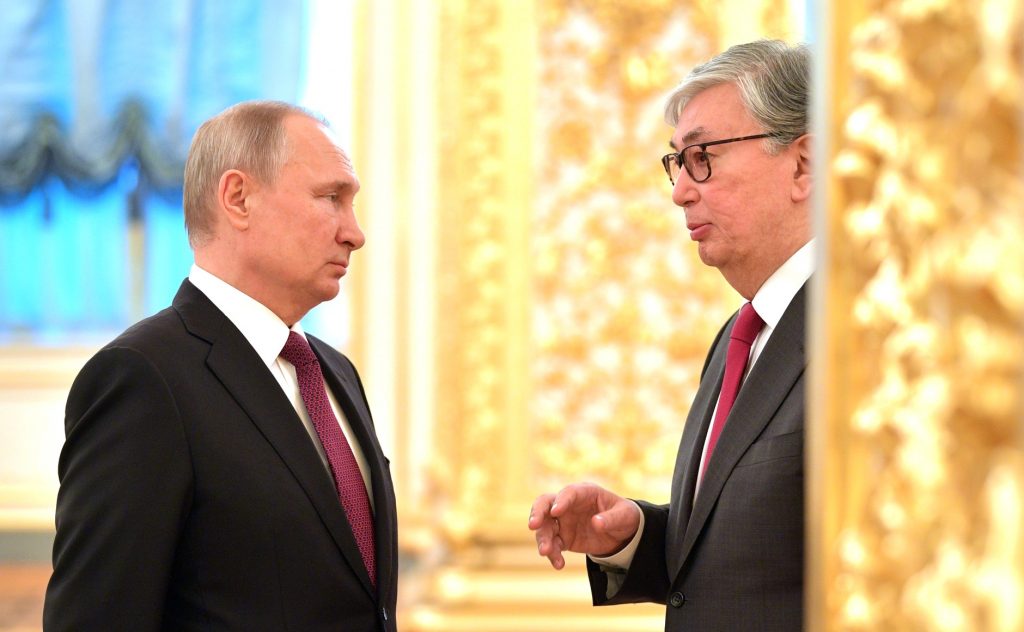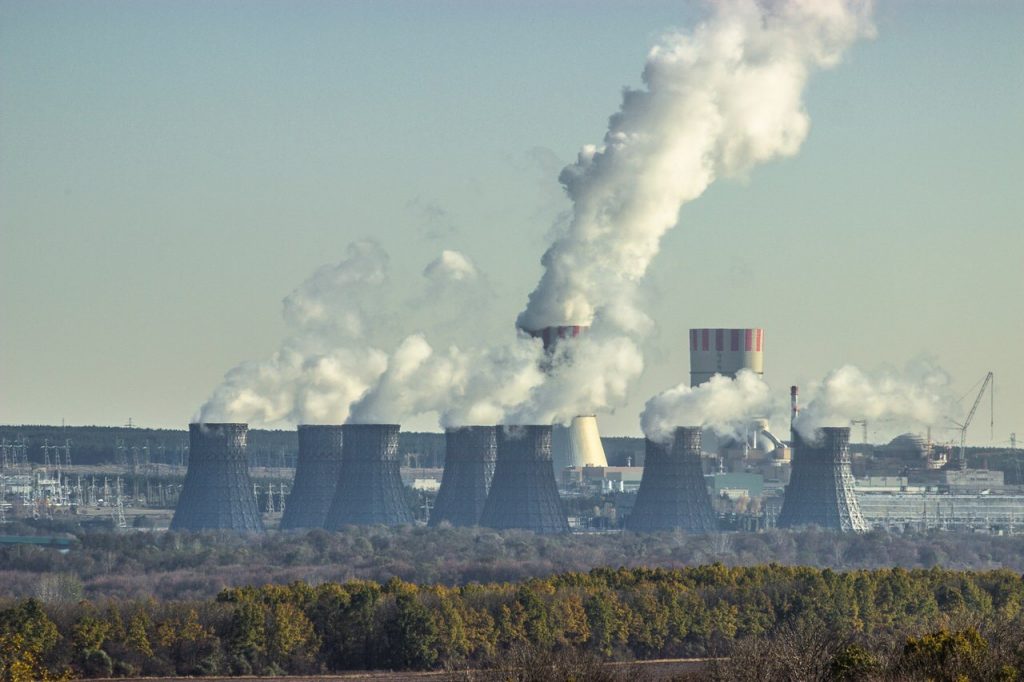«Due to the historical background, the Kazakhstanis have fear of the nuclear power. Internal resistance and justified fear of this industry cast doubts on the consensus on this issue» – said Aslan Nurzhanov, a project manager of the Centre for Social Interaction and Communications and a participant of the School of Analytics CABAR.asia.
РусскийFollow us on LinkedIn
Brief description of the article:
- The nuclear power station construction has been discussed for the last 20 years;
- Kazakhstan is the global leader in uranium production and export;
- The increase in the nuclear power’s share will contribute to the decreased consumption of coal and lower the environmental impact;
- In Kazakhstan, this issue has another aspect and is clouded by associations with the Semipalatinsk nuclear tests.
The spring of 2019 was full of surprises for Kazakhstan. The shift in power and the presidency of Kassym-Zhomart Tokayev caused a wave of newsworthy events in the country. The interview of the president of Russian Federation Vladimir Putin following the official meeting held on April 3, 2019 with the Kazakhstan party in Moscow became another reason for hot discussions. During the press meeting, Vladimir Putin said Russia was willing to develop relations with Kazakhstan and take them to the new level, namely to provide “assistance” in construction of the nuclear power plant (NPP) in Kazakhstan.

Construction of the nuclear power plant and the nuclear power issue in general causes mixed reaction in common people. In Kazakhstan, this issue has another aspect and is clouded by associations with the Semipalatinsk nuclear tests. However, you cannot live on memories and all pros and cons should be soberly evaluated if the issue affects the needs of the country and its citizens. Just like in any analysis, the actual need should be evaluated in the first place and this data should be taken into account.
Energy appetite of Kazakhstan Kazakhstan is one of the richest in mineral resources countries. However, the country does not use its power potential to the fullest. Currently, the power sector relies mainly on coal, gas and petroleum industries. According to the forecasted electric power balance for 2019-2025 made up by the ministry of energy of Kazakhstan, the country is not going to face any shortage. However, the country consumes and produces electric energy erratically, so the ministry of energy predicts constant shortage of energy in southern regions of the country[1]https://www.kegoc.kz/sites/default/files/content-manager/utverzhdennye_balansy_2019-2025_rus_0.pdf (see tables 1 and 2). The thorny way The nuclear power plant construction has been discussed for the last 20 years. Every discussion and attempted launch of construction was objected by the citizens and some members of the expert community. The first surge in information about nuclear power plant was in 1997, when the minister of education and science of the Republic of Kazakhstan Vladimir Shkolnik emphasised the importance of construction of the new NPP instead of an aged power plant of Mangistau nuclear plant (MAEK). The plan of nuclear power plant construction at Lake Balkash, along with the western region, was considered but didn’t come to its logical end, and was set aside as a result. However, the same place has become an issue of discussion in all news related to the construction of a nuclear power plant. Over time, in 2006, the issue of construction of the nuclear power plant emerged full-blown again. Russia offered assistance in the launch of the nuclear power plant at MAEK in Mangistau region, namely it offered to install a VBER-300 reactor. The western region is of strategic importance for Kazakhstan because it has the majority of oil and gas deposits there. However, the region still faces shortages of electricity and fresh water. Thus, the government could kill two birds with one stone by launching a nuclear power plant, but the plan wasn’t implemented and was suspended in 2009. After a few ineffective attempts to build a NPP, the government expanded its views after 2014 and considered cooperation not only with Russia but also with other countries that develop nuclear power industry. This time the project was discussed more thoroughly and the places for new nuclear power plants were selected. Potential places were the town of Kurchatov and the village of Ulken, located near Lake Balkhash. The partner countries in NPP construction remained unclear. One of the first shortlisted companies were Japanese Toshiba and French Areva, who were going to install their projects at the Kazakhstan nuclear power plants. It should be noted that both companies had a good capacity and were deemed as pioneers in this sphere. However, despite the signed memorandum of understanding on cooperation in NPP construction with Russia and similar documents singed with Japan, the negotiations on construction failed. In November 2016, minister of energy Kanat Bozumbayev ended the discussions “temporarily” and said the Kazakhstan energy segment had excess of electricity and, according to their forecasts, no NPP would be constructed for at least seven years (until 2023). The current wish of the authorities to construct the nuclear power plant stirs interest. The responses of the officials show that it’s not only Russia who is going to contribute to construction of the NPP, but Kazakhstan party is not “surprised” with offers from their neighbours. Thus, minister of energy of the Republic of Kazakhstan Kanat Bozumbayev said the state was aware of the acquired fear of the Kazakhstanis of nuclear power and public opinion would be definitely taken into account in final decision-making process. Recent discussions led to a village of Ulken in Almaty region. Proximity to Lake Balkhash and a developed power transmission system count in favour of Ulken. It’s obvious that the authorities of Kazakhstan have constructive rhetoric. The government openly draws attention to public opinion and says it understands the internal resistance of people to NPP construction. At the same time, construction of the nuclear power plant is not dictated by the moods of certain people, but strategic vectors of national development. This issue has a lot of pros and cons, which should be focused on.Atom for peace
First of all, major uranium reserves in the country count in favour of construction of a nuclear power plant. According to the World Nuclear Association, Kazakhstan is on the second place in the world with its proven reserves of uranium amounting to more than 800 thousand tonnes. In the comparative analysis of global energy reserves of uranium, the share of Kazakhstan is about 14%[2]World Uranium Mining Production. http://www.world-nuclear.org/information-library/nuclear-fuel-cycle/mining-of-uranium/world-uranium-mining-production.aspx.
Another counterargument is the cost and expediency of construction of nuclear power stations. According to rough estimates, the average cost of a 1 GW NPP is 5-5.5 billion dollars. This amount is five times higher than the cost of production of the similar amount of power from coal and gas.
Meanwhile, there is another problem related to the territory and underpopulated country. Construction of a nuclear power plant in one of the country’s regions will provide nuclear power only to a small share of people, while the rest of the country will need to use power lines. However, this scheme seems unreasonable and makes no sense. From the scratch New decision-makers at the national level open up new opportunities and approaches to promote “long-forgotten new” initiatives. The Russian party is obviously concerned in expanding cooperation with Kazakhstan and setting specific goals to reach. Meanwhile, the government of Kazakhstan has its own prerogatives, yet it has to consider the reverse side, i.e. to assess all risks.This article was prepared as part of the Giving Voice, Driving Change – from the Borderland to the Steppes Project implemented with the financial support of the Foreign Ministry of Norway. The opinions expressed in the article do not reflect the position of the editorial or donor.
If you have found a spelling error, please, notify us by selecting that text and pressing Ctrl+Enter.
| ↑ 1 | https://www.kegoc.kz/sites/default/files/content-manager/utverzhdennye_balansy_2019-2025_rus_0.pdf |
| ↑ 2 | World Uranium Mining Production. http://www.world-nuclear.org/information-library/nuclear-fuel-cycle/mining-of-uranium/world-uranium-mining-production.aspx |
| ↑ 3, 4 | Driven into Coal. Review. Coal Production and Power Generation in Kazakhstan. Status and Prospects. https://bankwatch.org/wp-content/uploads/2018/01/KZ-Coal_RU.pdf |
| ↑ 5 | The Concept of the Transition of the Republic of Kazakhstan to a “Green Economy”. https://greenkaz.org/images/for_news/pdf/npa/koncepciya-po-perehodu.pdf |
| ↑ 6 | https://tengrinews.kz/zakon/pravitelstvo_respubliki_kazahstan_premer_ministr_rk/konstitutsionnyiy_stroy_i_osnovyi_gosudarstvennogo_upravleniya/id-P1300001385/ |

